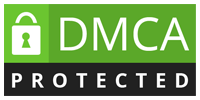We are now in the digital age, where cybersecurity has become one of the leading industries in information technology.
A couple of years before has shown us that cyberattacks and cybercrime-related activities have increased. Cyber Criminals attack methods have become more complex, making it difficult to track and stop them.
Companies that have been compromised by these cyberattacks have suffered losses in property and reputation. Some have even closed their business.
Small to large companies need to be more aware of these cybersecurity threats and how to manage them. One method to mitigate these threats is by using Threat Intelligence.
This method equips companies and organizations with predictive protocols to identify network vulnerabilities and potential threats so that the network security team can prepare for preventive measures, protective plans, and solutions.
In this topic, let us learn some of the threat modeling methods known as ‘PASTA.’
PASTA Threat Modeling Method
Process for Attack Simulation and Threat Analysis or PASTA is a method of execution in performing threat modeling.
The process focuses on applying security conteractive protocols to effectively manage the identified threat model’s attack points, vulnerabilities, and weaknesses.
It can help companies understand an attacker’s perspective on targeted infrastructure and applications. Then they can create strategies for preventive threat management, policy, and process.
The PASTA Threat Modeling System
The PASTA threat model has seven phases.
Objectives
Define the objective of your threat model by listing it down. This includes what method to use and the tools needed.
Having a well-detailed plan will make your process more straightforward and efficient by focusing on targeted issues and relevant assets.
Technical Scope
In this phase, you will have to look into your technical and software specifications. This information is useful in defining the boundaries of applications. Other factors to consider are the network environment, application dependencies, network diagrams, logical diagrams, and physical architectures.
Breakdown and Analysis
Company assets need to be identified and defined. By doing this, your system trust levels and data entry points are established, resulting in your actors and assets’ risk management.
This can easily be done by breaking down your service, software, and hardware related applications.
Threat Analysis
In this process, you will be extracting the data and information collected from threat intelligence sources.
The data extracted will then be your reference as a semi-simulation of an attack applicable to your network.
Weakness and Vulnerability
In this phase, all identified vulnerabilities and weaknesses are properly mapped and recorded.
They are then categorized in terms of attack probability and damage level.
Experts can then prioritize cases depending on the critical level.
Attack Assessment and Modeling
Attack points are mapped in order to trace its pathway. This where you can see an attack starting point up to its target.
Here, the surface attack on your application can be identified.
Analyzing Model and Simulation
The identified weak point is being exploited to see how critical it can be. The data collected from this process is then recorded for future reference. Threat modeling links the attack point where it can be exploited.
Risk and Impact
When results have been identified and defined, they are to be re-evaluated so that the missed out security protocols can be fixed and preventive security measures can be placed.
Career Opportunity
Get yourself oriented with the different expert professions in the industry of cybersecurity.
You can check our website for our services, courses, and certifications offered at RCyberSolutions. Our company has decades of professional experience and are willing to train everyone, students, and professionals that have a passion for learning cybersecurity.







